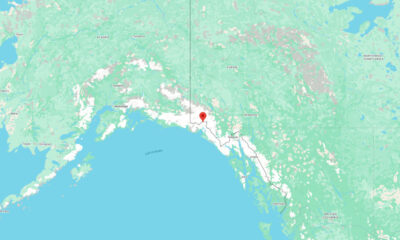Reviews
Utilizing Social Media Platforms for Educational Purposes
With distance learning rising after the pandemic and beyond, educators continue looking for methods and approaches to improve student engagement. No wonder:
The global eLearning market continues to grow, expecting its value to reach $319 billion by 2029. It’s high time to adjust to new conditions, which are not only about mastering new technologies and dealing with AI tools in education. Another challenge for teachers is to develop creative methods of communication and networking with students:
Tech-savvy, they still struggle with self-discipline when learning online. The temptation of delegating writing assignments to a reliable essay writing service is high, and social media serves as the number one time- and self-discipline distractor for most Gen Z representatives. With that in mind, many educators still doubt whether platforms like TikTok, Facebook, or Instagram are worth incorporating into the learning process.
They are worth it.
When used right, social media can be an alternative channel to utilize for educational purposes. Since today’s students can’t imagine their lives without those platforms, teachers can make this “addiction” work for good.
How Social Media Can Help in Education
Distance learning, including online lessons and courses, requires a particular skill set from both a teacher and a student.
- Teacher: mastering LMSs (learning management systems), preparing digital materials for online lessons, checking student progress, and providing mentees with feedback
- Student: downloading the materials, self-discipline in online listening to a teacher and learning the materials, doing the homework, preparing for online tests, and mastering online learning platforms to pass those tests successfully
Easier said than done.
When it comes to practice, things are more complicated. New challenges emerge, and social media platforms can help overcome them.
#1. Digital Literacy
Digital literacy is “the ability to find, evaluate, utilize, share, and create content using information technologies and the internet” (Cornell University). It may also include media literacy and tech fluency.
Here’s the main issue with that:
While most college students are tech-savvy today, they often lack responsible data processing. In other words, they still need help to navigate their educational needs, find reliable sources, distinguish between true and false information, etc. The educators’ task is to help students better interact with media resources.
But:
Educators themselves may lack digital literacy when it comes to mastering and navigating particular programs and online resources. It’s time-consuming and often frustrating to examine FAQ sections on educational platforms or search for “Help Pages” there. And that’s where social media features can help:
Encourage students to interact with niche experts via social media platforms. They’ll find it more familiar and comfortable than reading lengthy instructions on how this or that educational software or resource works. Social media platforms can be great educational resources where students and teachers find answers to their questions, network with niche influencers, and develop their computer skills. For example, students preparing for specialized certifications, such as using Microsoft AI-102 Practice Test Dumps, can leverage social media to connect with experts, share preparation tips, and access additional resources to improve their learning outcomes.
#2. Efficient Communication in eLearning
Social media can also help with communication limits in online education.
We can only cover some thoughts and questions at once when teaching or learning online. Some issues or ideas may hit a student outside their online classroom, and they won’t be able to tell about it. Distance learning is often about a lack of personal communication, affecting the sense of belonging to the community. It makes some students feel isolated, and that’s another moment when social media can help in education.
Teachers can create groups for students on X, Facebook, and other platforms, encouraging their mentees to share thoughts and interact with peers. Studies prove that social media promotes active learning, — 75% of students say it’s comfortable to network and discuss coursework via social platforms — so they can be a perfect place for interaction and building a community.
Social media can also improve teacher-student communication:
They will contact each other quickly from any device whenever necessary; students will get access to educational resources outside the LMS or classroom; teachers can use social media platforms to update students, send them alerts, or even live-stream lectures and organize cross-channel learning.
#3. Motivation to Study
Self-motivation is critical for students to develop for academic success, but it’s challenging to do in the case of online education. Young people often lack time management skills, and online classes are dull for them because of the same-looking tasks and activities. Social media can help diversify learning formats to encourage students with different learning styles:
Audio lessons, video lectures, interactive elements — modern techs allow students to get the most out of online learning experiences.
How can a teacher engage students using social media platforms for educational purposes?
- Try X (ex-Twitter) threads for topical discussions
- Download video lessons on YouTube
- Organize writing contests in Facebook groups
- Send reminders about assignments or deadlines via messengers
- Give extra credit for posting topic-related content on Instagram
Takeaways
Social media is beneficial for both teachers and students. The former can use those platforms to engage mentees, contact them faster, and give feedback on their academic achievements. The latter can find social media more convenient for interacting with peers, accessing learning materials, and contacting teachers directly.
Win-win, agree?

-

 Health4 days ago
Health4 days agoFrance confirms 2 MERS coronavirus cases in returning travelers
-

 Health6 days ago
Health6 days ago8 kittens die of H5N1 bird flu in the Netherlands
-

 Entertainment4 days ago
Entertainment4 days agoJoey Valence & Brae criticize DHS over unauthorized use of their music
-

 Legal1 week ago
Legal1 week ago15 people shot, 4 killed, at birthday party in Stockton, California
-

 US News6 days ago
US News6 days agoFire breaks out at Raleigh Convention Center in North Carolina
-

 Health1 week ago
Health1 week agoMarburg outbreak in Ethiopia rises to 12 cases and 8 deaths
-

 US News1 day ago
US News1 day agoMagnitude 7.0 earthquake strikes near Alaska–Canada border
-

 Health5 days ago
Health5 days agoEthiopia reports new case in Marburg virus outbreak



